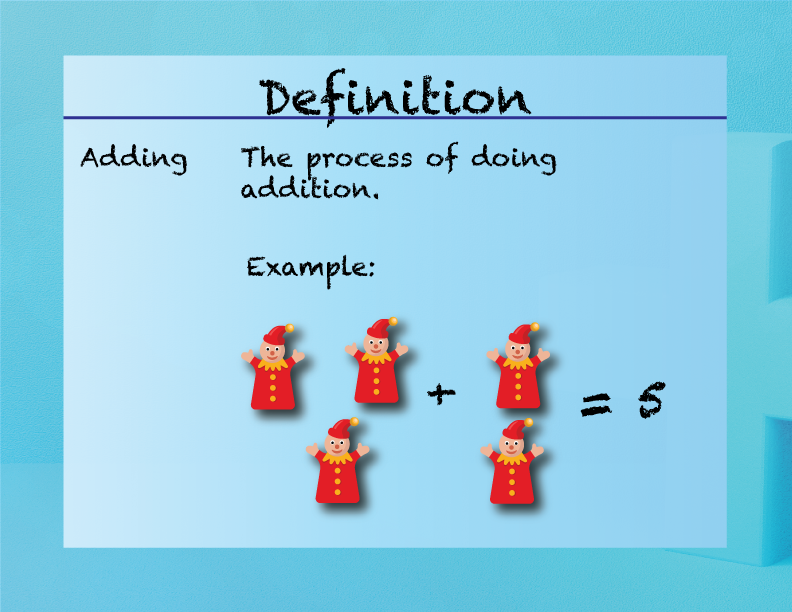
Display Title
Elementary Math Definitions--Addition Subtraction Concepts--Adding
Display Title
Adding

Topic
Addition and Subtraction
Definition
Adding is the process of combining two or more numbers to get a total sum.
Description
Adding is a fundamental arithmetic operation that involves combining two or more numbers to find their total. For example, adding 3 and 4 gives a sum of 7. This operation is crucial in everyday life, from calculating expenses to measuring quantities in recipes.
In mathematics, addition is symbolized by the plus sign (+). The numbers being added are called addends, and the result is known as the sum. For instance, in the equation
3 + 4 = 7
3 and 4 are the addends, and 7 is the sum. Addition is associative, meaning that the grouping of numbers does not affect the sum, and commutative, meaning the order of numbers does not change the result.
Understanding addition is vital for students as it forms the basis for more complex mathematical concepts such as multiplication, algebra, and calculus. It also enhances problem-solving skills and logical thinking.
Teacher's Script: "Today, we are going to learn about adding. When we add, we put numbers together to find out how many we have in total. For example, if you have 3 apples and I give you 4 more, how many apples do you have now? That's right, you have 7 apples! Adding helps us find out the total number of things we have."
For a complete collection of terms related to Addition and Subtraction click on this link: Addition and Subtraction Collection
| Common Core Standards | CCSS.MATH.CONTENT.1.OA.B.3, CCSS.MATH.CONTENT.2.NBT.B.9 |
|---|---|
| Grade Range | 1 - 3 |
| Curriculum Nodes |
Arithmetic • Addition • Addition Expressions and Equations |
| Copyright Year | 2021 |
| Keywords | addition, subtraction, equation, place value |